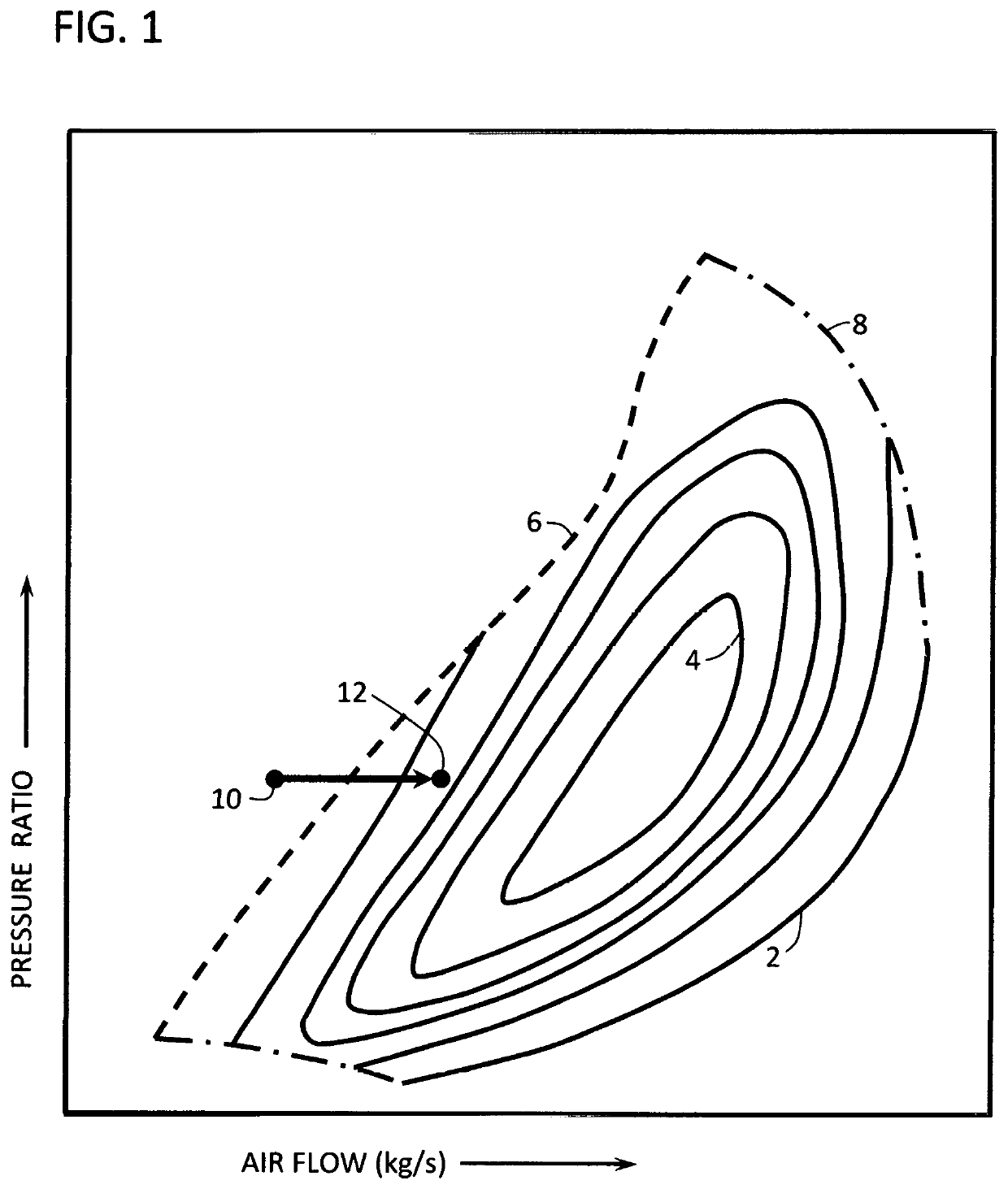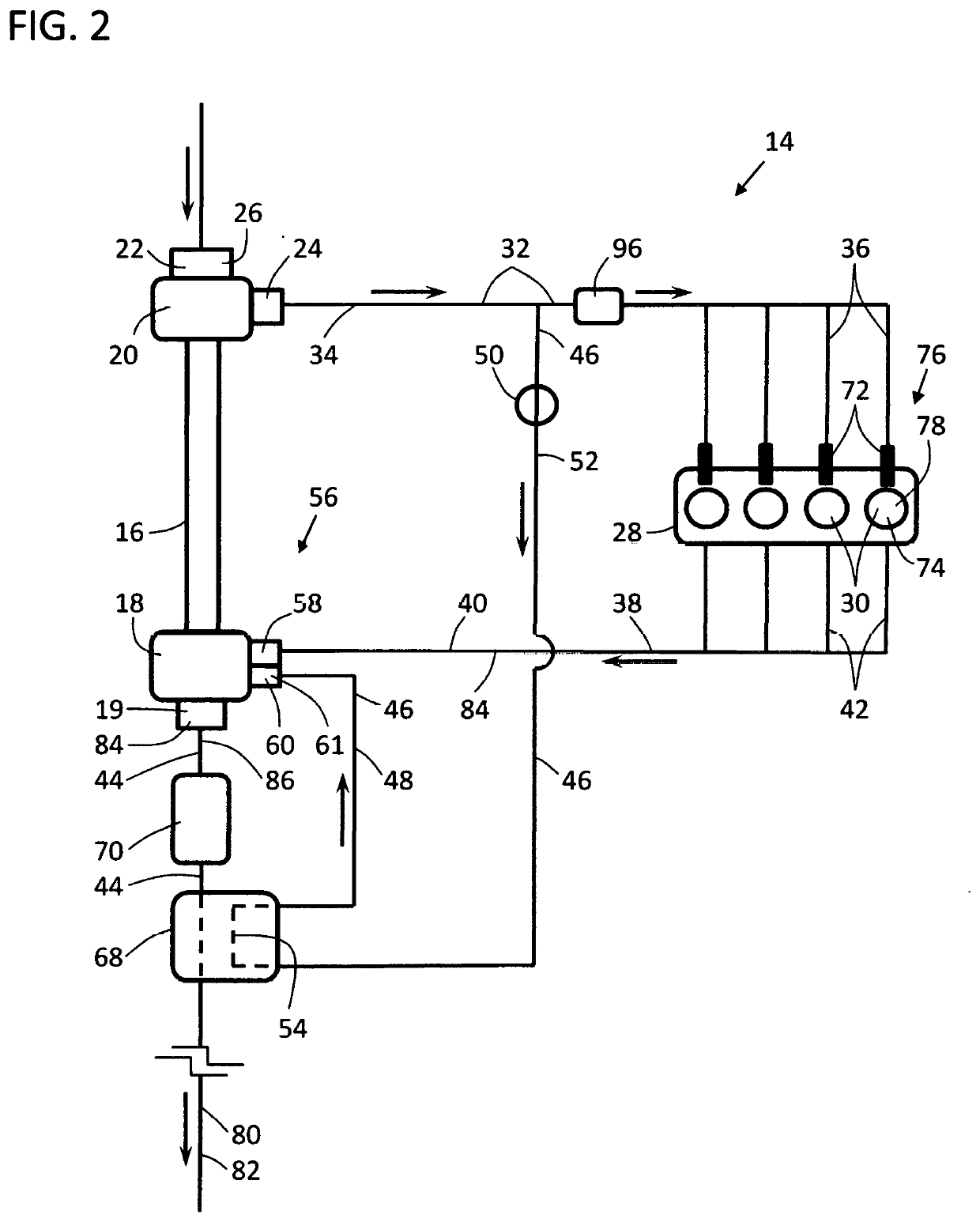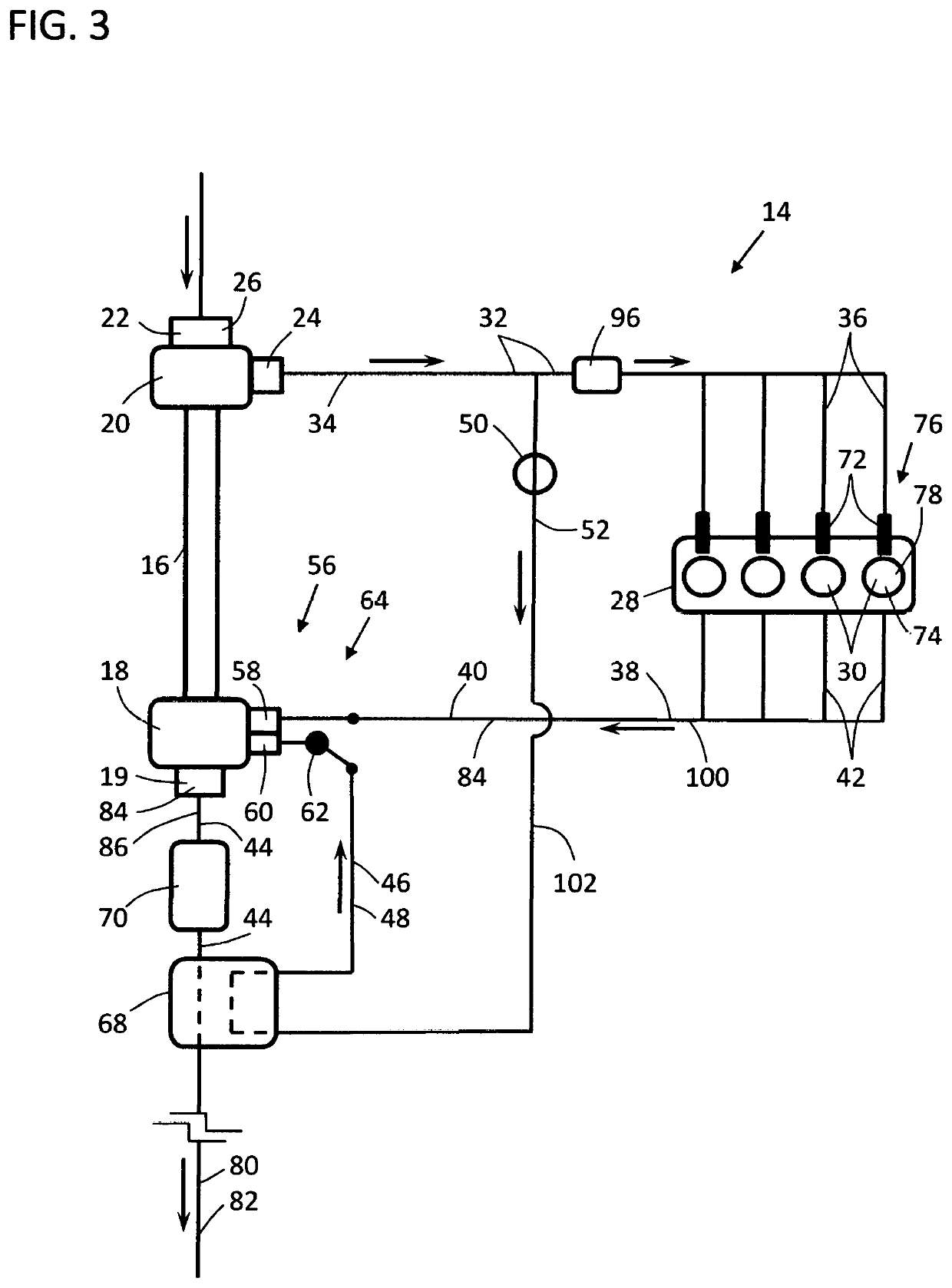Twin Scroll Turbocharger with Waste Heat Recovery
a turbocharger and waste heat technology, applied in the direction of engines, mechanical equipment, machines/engines, etc., to achieve the effect of maximizing engine torque, preventing compressor surge, and increasing air mass flow through the compressor
- Summary
- Abstract
- Description
- Claims
- Application Information
AI Technical Summary
Benefits of technology
Problems solved by technology
Method used
Image
Examples
Embodiment Construction
[0026]FIG. 1 is intended to diagrammatically illustrate air flow through a turbocharger compressor according to the present invention, and in more detail FIG. 1 is intended to diagrammatically illustrate a portion of the present invention. Air mass flow is shown on the horizontal axis of the FIG. 1 diagram, and compressor pressure ratio in shown on the vertical axis of the FIG. 1 diagram. Constant efficiency compressor contour lines 2 are plotted in the FIG. 1 diagram, with contour line 4 indicating the area of highest compressor operating efficiency. The surge limit line 6 indicates the maximum pressure ratio that can be achieved by the compressor for a given air mass flow rate. Compressor operating conditions to the left of surge limit line 6 will encounter surge, and are therefore unacceptable. Operating conditions to the right of surge limit line 6 will not encounter surge, and may be used within the operating speed limits of the turbocharger. The maximum speed limit line 8 of t...
PUM
 Login to View More
Login to View More Abstract
Description
Claims
Application Information
 Login to View More
Login to View More - R&D
- Intellectual Property
- Life Sciences
- Materials
- Tech Scout
- Unparalleled Data Quality
- Higher Quality Content
- 60% Fewer Hallucinations
Browse by: Latest US Patents, China's latest patents, Technical Efficacy Thesaurus, Application Domain, Technology Topic, Popular Technical Reports.
© 2025 PatSnap. All rights reserved.Legal|Privacy policy|Modern Slavery Act Transparency Statement|Sitemap|About US| Contact US: help@patsnap.com



